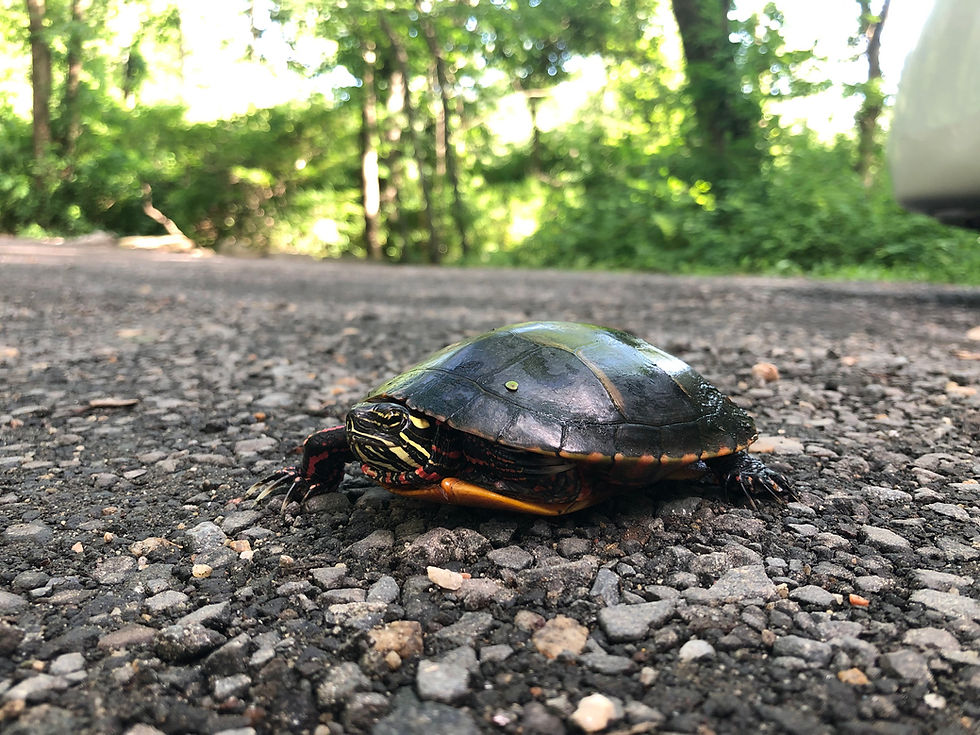2021 Notes from a Naturalist
December 8, 2021
What If the Old Growth Forests had not been Cut Down?
By Sam Nunes - Environmental Educator
"I recently had someone ask me how different the forests would look today had the early settlers not cut them down. It’s difficult for humans around the world to imagine an old growth forest because there aren’t many left. Fortunately, we have regained many forests through the last few centuries, but how different are they than what could have been if nothing had been touched?"
- Read the full article here
November 12, 2021
How to Survive the Cold as a Salamander
By Sam Nunes - Environmental Educator
"Throughout millions of years, animals have evolved amazing adaptations to survive through the winter. Some animals have thick fur, some travel far distances to warmer climates, some go into a long dormant periods, and some actually allow their bodies to freeze. Then there are red-backed salamanders."
- Read the full article here
October 13, 2021
Advice From A Chipmunk - How to Prepare for Colder Weather
By Sam Nunes - Environmental Educator
"Autumn is a dynamic time in the natural world. While we scurry to get our pumpkin spice lattes, the animals scurry around preparing themselves for winter. An excellent example of this is the Eastern Chipmunk’s fall preparation. Have you ever noticed these cute critters with an unusually large amount of food in their cheeks? It’s probably to gather enough supplies for the cold months ahead."
- Read the full article here
September 21, 2021
Let the Beech Drop
By Sam Nunes - Environmental Educator
"What color comes to mind when you read the word “Plant”? GREEN! The green color found in many plants comes from an organelle in the plant cell called chloroplast that contains chlorophyll. This is used to convert sun energy into sugar through photosynthesis. Plants look green because that color is not used for photosynthesis and is reflected back into our eyes. But what happens when a plant does not have chlorophyll?"
- Read the full article here
August 30, 2021
Analysis of Pond Water in Ridgefield Lakes
By Elizabeth Rogers, and Florence Mercurio - Ridgefield Girl Scout Troop 50075 - August 2021
"For our Silver Awards, a project where small groups are put in charge of improving part of their community, our small Girl Scout troop decided to investigate two bodies of water that are frequently used by the public: Woodcock Pond and Fox Hill Lake."
- Read the full article here
July 22, 2021
Eye of the Owl
By Allegra Jacobs, Animal Care Coordinator - July 2021
"Owls have HUGE eyes, and they’re not just for show. Designed to help them hunt in the dark, the eye of an owl is extremely farsighted to help them spot prey down on the ground when they are up in a tree."
- Read the full article here
June 16, 2021
Yellow Jackets - What Are They Good For Anyways?
By Sam Nunes, Environmental Educator - June 2021
"Yellow jackets are one of the top summertime fears. As an educator, I am asked all the time if we could just get rid of them. But that would be a bad idea, because they have an important role in the environment. But what is that role? How are yellow jackets benefiting their ecosystem?"
- Read the full article here
May 20, 2021
Loving our Lawn Weeds - Yarrow
By Sam Nunes, Environmental Educator - May 2021
"Each year in May I like to shed some light on the ways that lawn weeds can actually benefit us and our health. “Weed” is a word we use for a plant that is unwelcome, unwanted, and perhaps grows a bit out of control. But if we can learn a little more about their nutritional and medicinal benefits, as well as the benefits of biodiversity in our lawns, maybe we can change our perspectives and respect these beautiful plants a little more."
- Read the full article here
April 19, 2021
Stonewall Stories
By Sam Nunes, Environmental Educator - April 2021
"For this month I would like to take you back in time thousands of years, when Connecticut was so cold there was a mile of ice on top of it."
- Read the full article here
March 18, 2021
The Magnificent Life of a Caddisfly
By Sam Nunes, Environmental Educator - March 2021
"Now is the time of year when you look down in the water in swamps and you see little bundles of leaves, sticks, and stones that seem to have sprouted legs and wiggle around under the water. In a way they have — in the center of that detritus mound is a larval caddisfly!"
- Read the full article here
February 10, 2021
How to Speak Bird
By Sam Nunes, Environmental Educator - February 2021
"Everyone loves bird songs, but have you ever taken a moment to think about what they’re saying? Birds use their calls for many reasons, including keeping track of companions, alerting each other about nearby danger, and impressing the ladies. An individual bird can have many different calls. Winter is actually a great time of year to learn some."
- Read the full article here
January 14, 2021
Do Black Bears Hibernate?
By Sam Nunes, Environmental Educator - January 2021
"What do animals do in winter? They hibernate! At least, many species do. If you ask anyone what animals hibernate, the first one they mention is usually the bear. But do bears really hibernate? What exactly is hibernation? The facts about hibernation might just blow your mind."
- Read the full article here

















